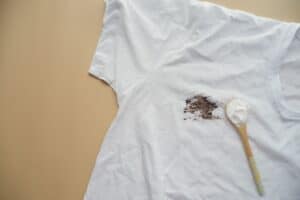5 eco-friendly storage solutions for wires, chargers and cabling
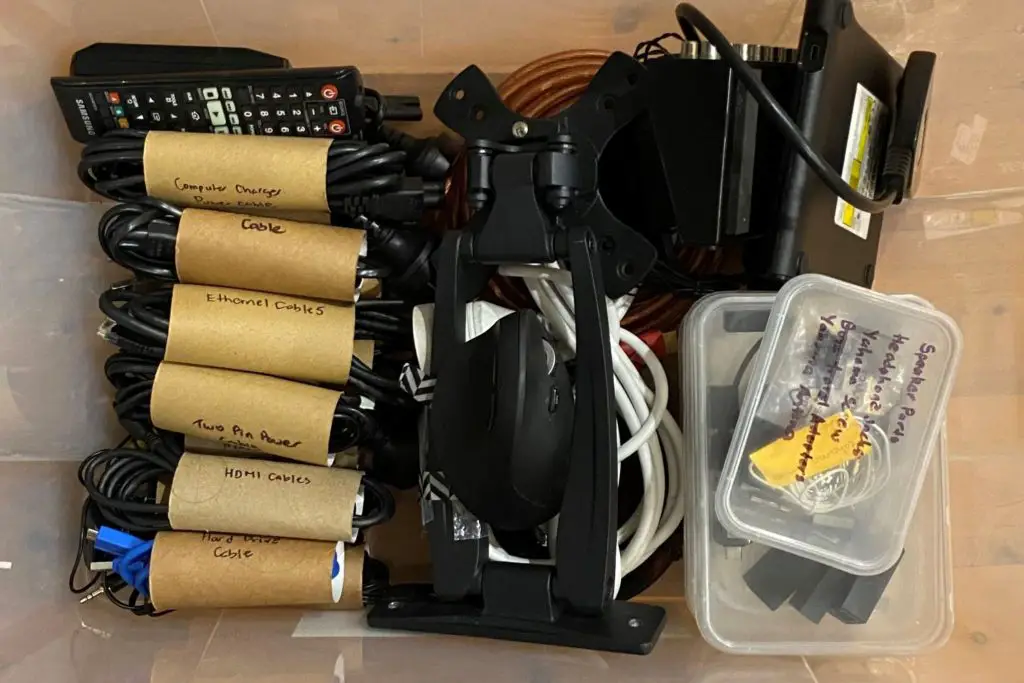
As I mentioned in my last blog post on organising wires and cabling, those who follow my Instagram stories voted for me to declutter this area of my home. And it took me forever to get around to doing it.
It was an overwhelming task because while the majority of our cabling was stored neatly away in a cupboard, it wasn’t at all organised. It was all just in one big mess in a large storage box and it looked overwhelming.
Well, I got over the overwhelm and tackled the decluttering job, as noted in the last blog post, and I got through it.
And I organised it for good. And I did it without purchasing any new products.
In this blog post, I share 5 eco-friendly storage solutions that helped me get my wires, chargers and cables organised. These are:
Now, none of this is pretty nor does it look perfect – it’s just real life. It’s practical and it works. If that’s up your alley, keep reading to find out more.
Tip 1: Toilet roll
You’ve probably seen this one. I have and thought it was a bit of a joke. But it’s no joke. It’s sooooo handy.
Just wrap the wires to the length of the paper roll and feed it through.
They stay contained. You have an easy way to label them. And they store easily when contained this way – you can stack them up easily on top of each other or you can store them vertically as shown in this blog post: https://www.onecrazyhouse.com/diy-cord-organizers/
And you are reusing an item and giving it a second life, which gets that eco-friendly tick.
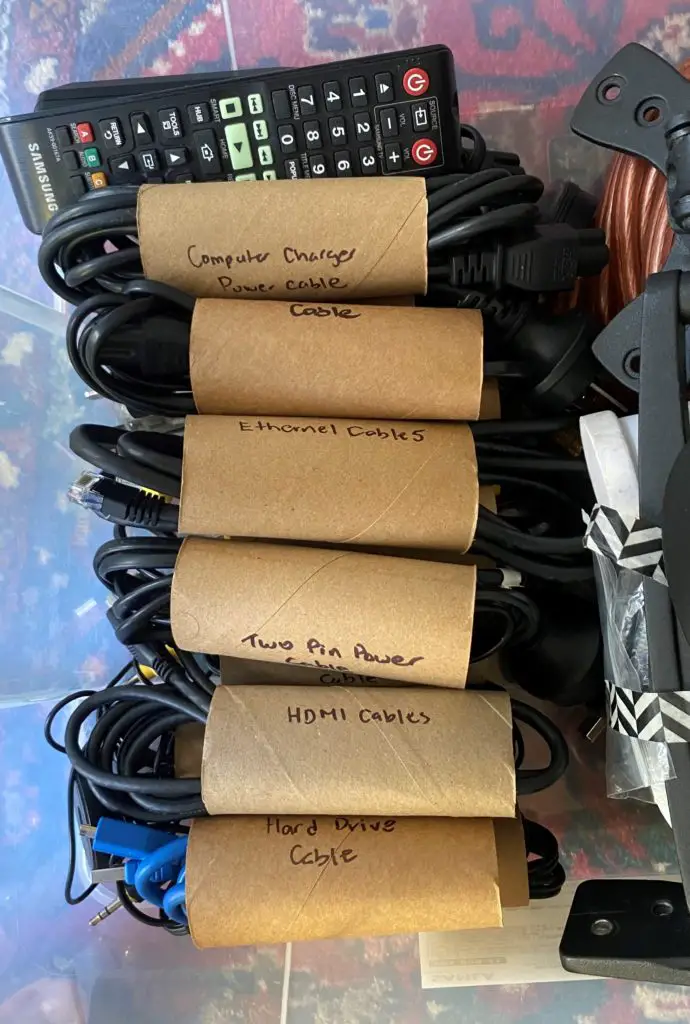
Tip 2: Wire ties
They invariably enter the house – those ties that hold together wires that come with electronic purchases.
Don’t throw them away – keep a spot to collect these items. There will come a time when you will need to use them.
They are useful for containing/ holding together larger cables that can’t be contained using a toilet roll. And also smaller ones that will just slide out of the rolls.
Tip 3: Take-away containers
Clear containers are always the best when it comes to storage solutions. You can see at a glance what has been stored away.
But there is no need to go out and buy new containers when the humble takeaway container will do. They clean up just fine in the dishwasher and there is no reason to throw these in the recycling bin when they are so useful.
This is good for smaller items that don’t need to be tied up but need to be contained.
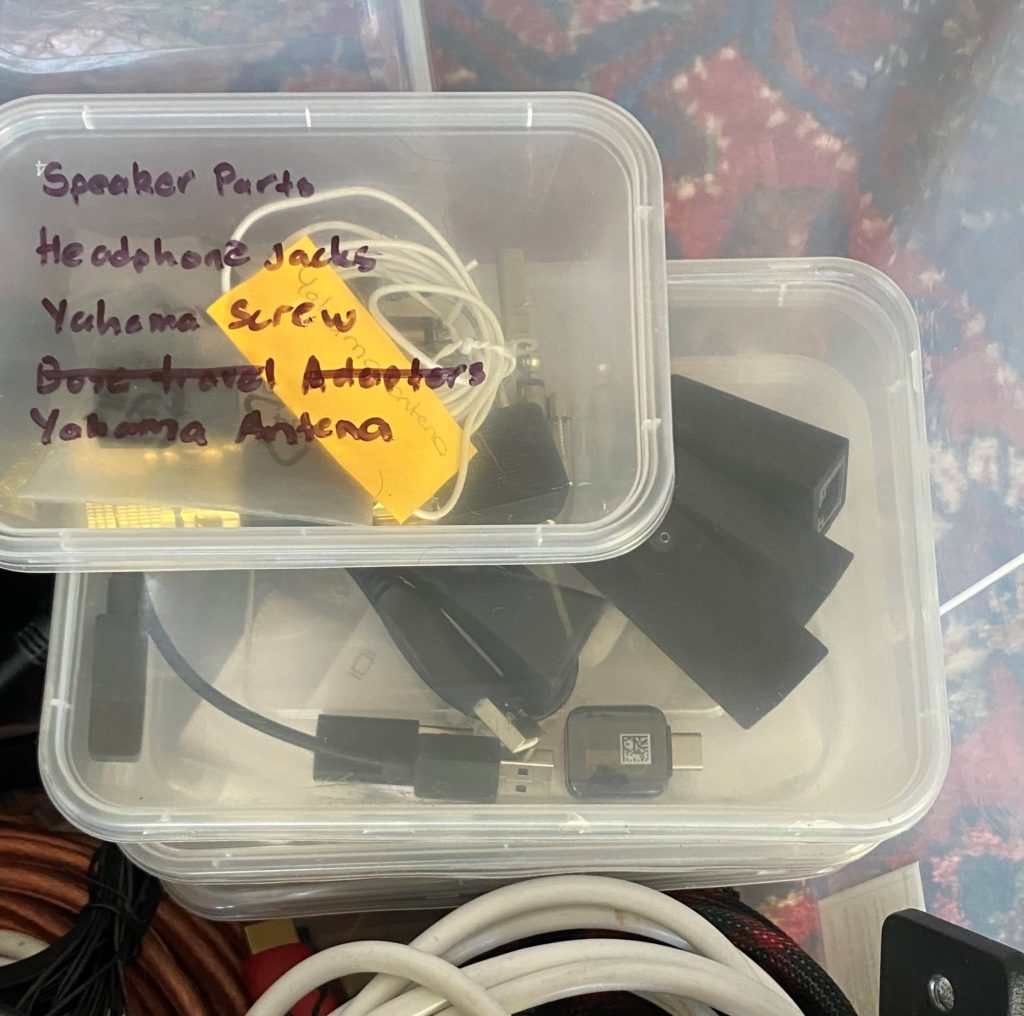
Tip 4: Shoe boxes/ tissue boxes
We used an old shoe box to store loose items my husband needs near his DJ equipment. This box is sturdy and doesn’t have any annoying stickers or branding, so it was the perfect candidate for this job.
If you find an item like this, don’t throw it into recycling – just reuse it.
Tissue boxes are another option. I see so many with nice patterns on them that may suit your home. Cut off the top and you have an open storage box perfect for storing any item you need easy access to.
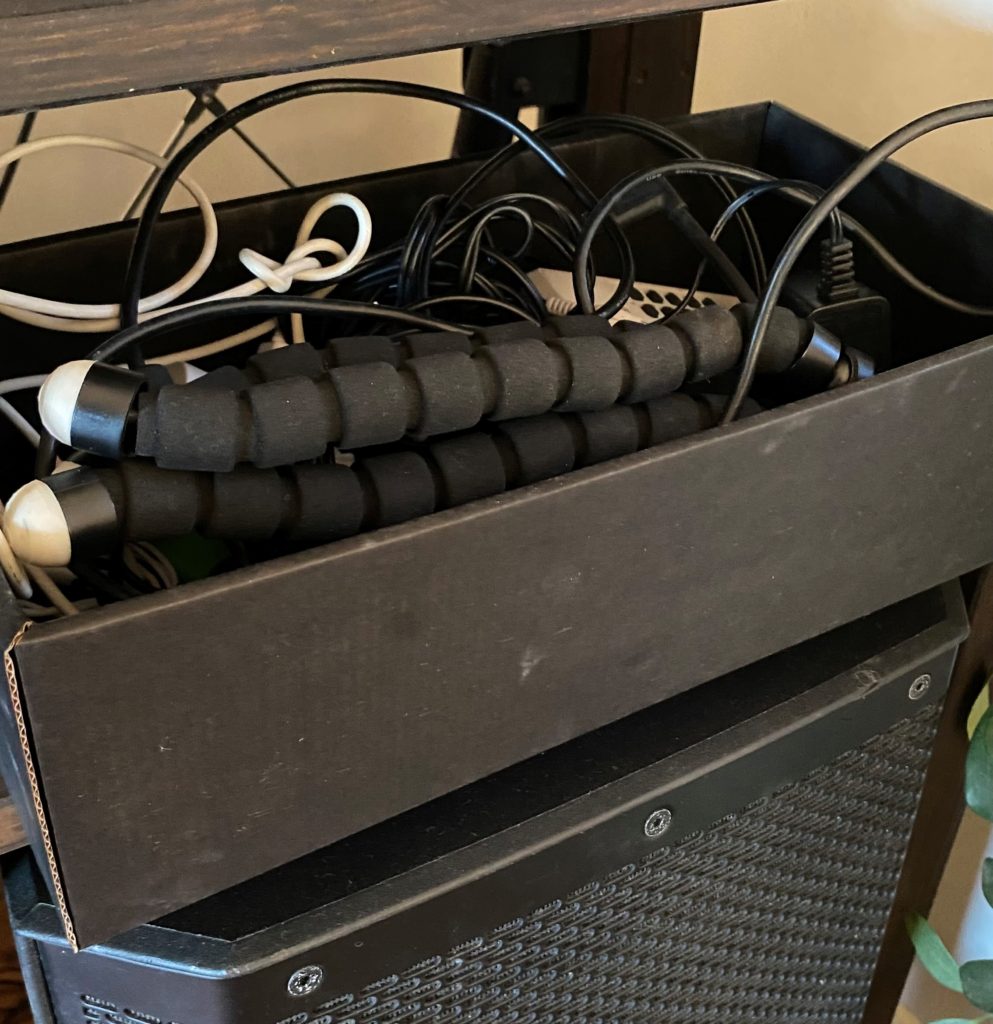
As I mentioned in my last blog post, OPEN storage space is key when storing items that are used often. My experience is, if you use a box with a lid it becomes too difficult for everyday use. Things end up being placed around the box rather than IN the box. So use open storage boxes to store items that need to be accessed daily.
Tip 5: Sharpies/ permanent marker
Okay, this is not specific to organising wires and cables – it’s a generic tip.
There is a tendency out there – which I’m guilty of as well – to use plastic labels for our storage boxes. I have a Dymo labelling machine and a manual one that uses typewriter font. The latter has a cool vintage vibe, which I love. But oftentimes these labels are unnecessary.
Especially when a good old Sharpie can do the trick.
For example, toilet rolls are easily labelled with a Sharpie. And takeaway containers are also easily labelled with Sharpies.
So no need to print off fancy labels.
And that’s it. As I said, nothing fancy, but it’s practical and it works. And I was able to organise our mess of wires for good, without having to purchase anything extra. Also, I didn’t have to rely on any fancy DIYs or a stash of items hoarded over time. Just everyday items that pop up regularly in our home.
Who said being eco-friendly was hard or expensive? Just have to be comfortable with the “imperfect”, which is just what life is anyway.
xxx Tahsin

